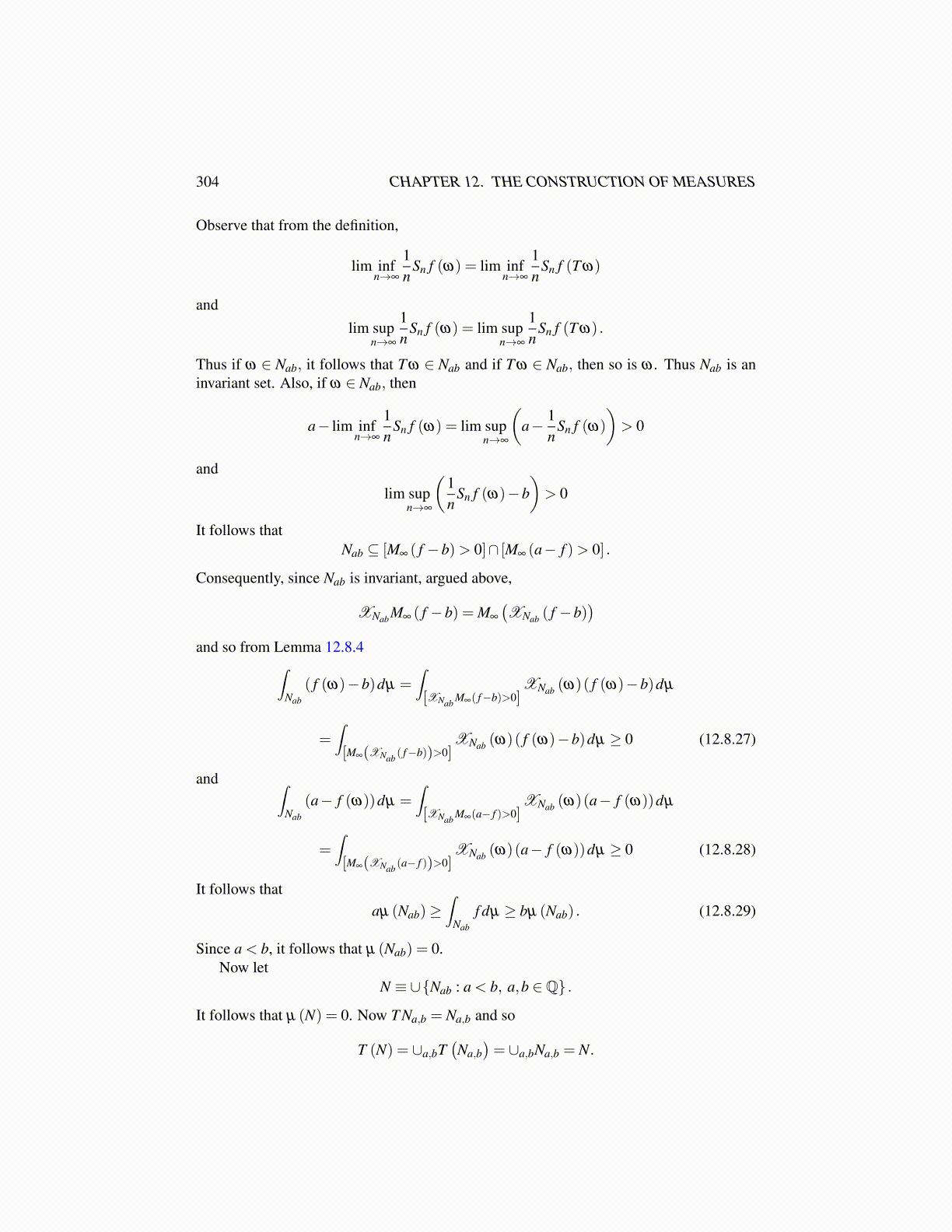
304 CHAPTER 12. THE CONSTRUCTION OF MEASURES
Observe that from the definition,
lim infn→∞
1n
Sn f (ω) = lim infn→∞
1n
Sn f (T ω)
andlim sup
n→∞
1n
Sn f (ω) = lim supn→∞
1n
Sn f (T ω) .
Thus if ω ∈ Nab, it follows that T ω ∈ Nab and if T ω ∈ Nab, then so is ω . Thus Nab is aninvariant set. Also, if ω ∈ Nab, then
a− lim infn→∞
1n
Sn f (ω) = lim supn→∞
(a− 1
nSn f (ω)
)> 0
and
lim supn→∞
(1n
Sn f (ω)−b)> 0
It follows thatNab ⊆ [M∞ ( f −b)> 0]∩ [M∞ (a− f )> 0] .
Consequently, since Nab is invariant, argued above,
XNabM∞ ( f −b) = M∞
(XNab ( f −b)
)and so from Lemma 12.8.4∫
Nab
( f (ω)−b)dµ =∫[XNab M∞( f−b)>0]
XNab (ω)( f (ω)−b)dµ
=∫[M∞(XNab ( f−b))>0]
XNab (ω)( f (ω)−b)dµ ≥ 0 (12.8.27)
and ∫Nab
(a− f (ω))dµ =∫[XNab M∞(a− f )>0]
XNab (ω)(a− f (ω))dµ
=∫[M∞(XNab (a− f ))>0]
XNab (ω)(a− f (ω))dµ ≥ 0 (12.8.28)
It follows thataµ (Nab)≥
∫Nab
f dµ ≥ bµ (Nab) . (12.8.29)
Since a < b, it follows that µ (Nab) = 0.Now let
N ≡ ∪{Nab : a < b, a,b ∈Q} .
It follows that µ (N) = 0. Now T Na,b = Na,b and so
T (N) = ∪a,bT(Na,b
)= ∪a,bNa,b = N.